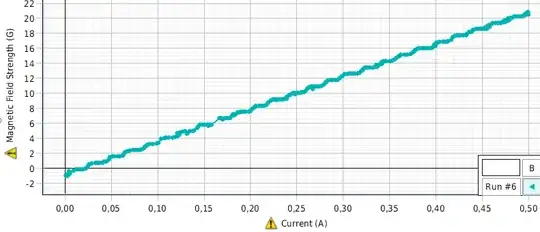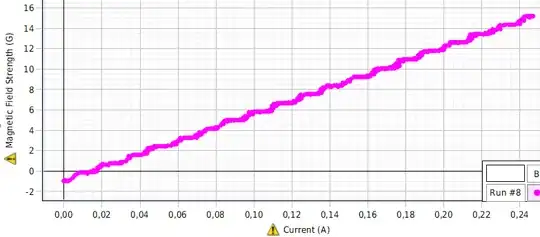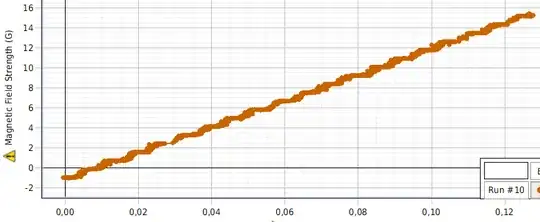We were running current through a solenoid coil with an iron core, and measuring the resultant magnetic field strength. We expected a purely linear relation for the "current-field strength" graph.
However, our data resembles a stairway instead.
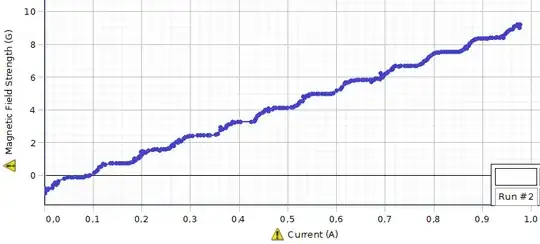
The plot refers to a solenoid with 400 windings (when using more windings we get more "steps") and can be accurately reproduced no matter what equipment we switch out.
We're completely stumped as to why we got this result. Our teacher has no clue and we haven't been able to find any resource on this effect.
Edit: Extra graphs
600 windings
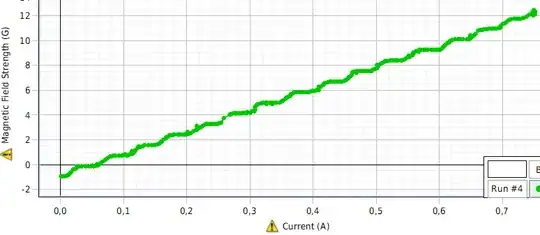
do note that the current axis is not the same for all of the graphs
If it's relevant to show how fast current was increased, here's current and time
